Tailings Management
Lundin Mining employs a comprehensive and integrated approach to tailings management. This provides us with confidence that potential environmental and social impacts can be reliably identified and minimized. Efficient mining and mineral processing, along with disposal underground where practicable, allow our operations to minimize the quantities of tailings stored on surface. Our operations aim to minimize associated risk with a clear understanding of the tailings characteristics, the facility construction materials, and the final settings in which they are placed.
-
Our Approach
Lundin Mining employs a comprehensive and integrated approach to tailings management. This provides us with confidence that potential safety, environmental and social impacts can be reliably identified and minimized. Efficient mining and mineral processing, along with disposal underground where practicable, allow our operations to minimize the quantities of tailings stored on surface. Our operations aim to minimize associated risk with a clear understanding of the tailings characteristics, the facility construction materials, and the final settings in which they are placed.
A full list of tailings facilities that Lundin Mining manages, including information on tailings management, construction method, maximum dam height and volume, can be found in our Tailings Management Information Sheet.
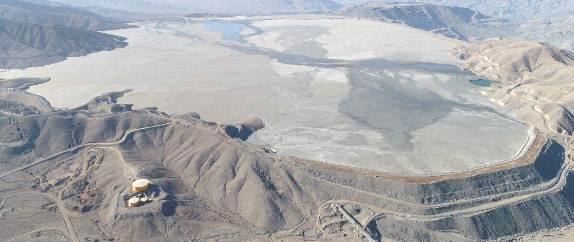
Candelaria Tailings Facility at the Candelaria Copper Mining Complex in Chile -
Our Facilities
Lundin Mining operates five mines with five active tailings facilities and uses two widely accepted methods of tailings disposal:
- underground disposal involves mixing tailings with products, such as sand or cement, followed by disposal as a paste backfill or hydraulic backfill in previously mined areas of underground mines; and
- surface disposal involves placement in engineered surface impoundments or, in the case of Eagle, in a previously mined open pit.
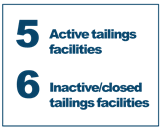
Of the five Lundin Mining operations, Eagle Mine is the only operation that does not have a constructed tailings impoundment with dams. Across the other operations, the active tailings facilities use various construction techniques for the main and secondary or perimeter dams, but none use upstream construction. Lundin Mining also maintains and monitors six inactive/closed tailings facilities, one of which is a rockfill combination centreline and downstream design followed by rockfill upstream raises and buttresses (Enemossen tailings facility at Zinkgruvan).
All tailings facilities are operated or closed as per the currently approved design. Full and complete engineering records including design, construction, operation, maintenance and/or closure exist for all tailings facilities except for the inactive Enemossen facility at Zinkgruvan, and closed San Esteban and Ojos del Salado facilities at Candelaria. San Esteban has an updated detailed design closure plan and the three Ojos del Salado tailings facilities are legacy sites that ceased operations in the 1960s. The Ojos del Salado tailings facilities were fully closed in 2012 as per an approved engineered closure plan.
A full list of tailings facilities that Lundin Mining manages, including information on construction method, maximum dam height and volume, can be found in the Tailings Management Information Sheet.
-
Tailings Management
Surface tailings impoundments can represent some of the most significant safety and environmental risks for the mining industry. Lundin Mining takes considerable care to ensure our tailings facilities are well-designed, built in accordance with leading industry practices and standards, well operated and maintained, inspected, independently reviewed, and carefully monitored.
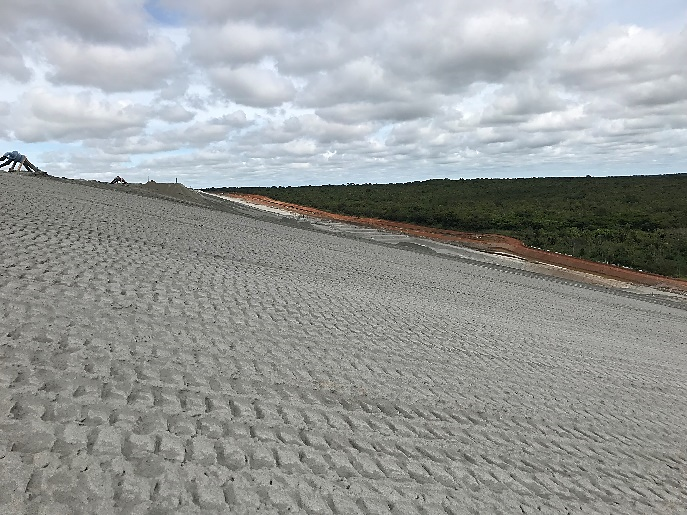
Chapada Tailings Facility at Chapada in Brazil Policies and Standards
Lundin Mining’s Responsible Mining Policy and Responsible Mining Management Systems (RMMS) include tailings specific principles and standards. All Lundin Mining’s operations manage their tailings in accordance with the Tailings Management Standard, developed in 2015, and recently updated to align to the Global Industry Standard on Tailings Management (GISTM). The updated Tailings Management Standard requires that for all tailings facilities throughout the entire lifecycle, from planning and design, construction, operation, closure, and post-closure, implementation of leading practices will be carried out to ensure:
- Zero harm to people and the environment;
- All aspects comply with Lundin Mining policies and standards and accepted international practice;
- All aspects comply with the commitments to stakeholders; and
- Leadership, personal commitment, and accountability from all employees, consultants, and contractors is embedded throughout all aspects of tailings management.
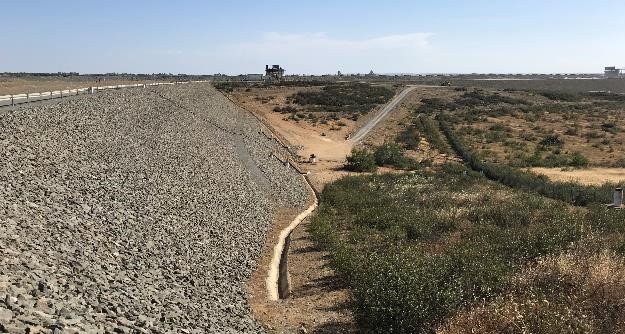
Cerro do Lobo Tailings Facility at Neves-Corvo
Monitoring and SurveillanceA requirement of the Tailings Management Technical Standard is for all sites to conduct regular geotechnical, hydrogeological and environmental monitoring to meet regulatory requirements and prevent the uncontrolled release of tailings and/or water to the environment.
All operations employ monitoring and surveillance systems which may include surface prisms, piezometers, inclinometers, remote sensing and other technologies to monitor tailings dams and water levels. Trigger action response plans (TARPs) provide clear guidance on how to respond to pre-determined trigger levels for surveillance activities.
All active tailings facilities have a closure plan which includes long-term monitoring requirements. The monitoring plan for the closed Ojos del Salado tailings facilities was reviewed in 2021 and additional dam safety instrumentation was installed. Plans to expand monitoring activites will be completed in 2022.
Responsible Person
All operations are required to identify a responsible person to ensure ownership and proper management of the tailings facility. The responsible person ensures procedures for each facility, including an Operating, Maintenance, and Surveillance (OMS) Manual and Emergency Preparedness and Response Plan, are regularly documented, and made available to operations personnel. The responsible person is an appropriately qualified, experienced and site-dedicated individual employed directly by the operation.
Staff Inspections
Tailings dams are regularly inspected by trained operators and technical staff, sometimes as frequently as several times daily, with formal documented staff inspections at least quarterly.
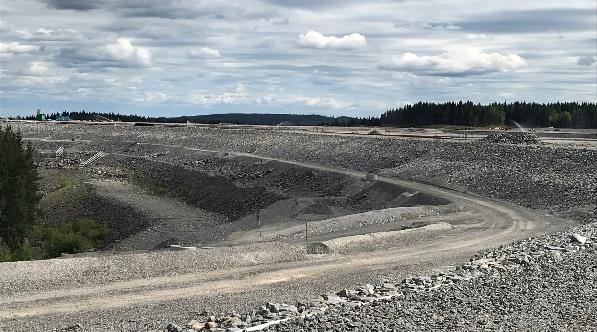
Enemossen Tailings Facility at Zinkgruvan in Sweden Engineer of Record
Each tailings facility has an appropriately qualified, licensed and experienced third-party geotechnical engineer to act as an Engineer of Record in the relative jurisdiction.
Dam Safety Inspections
Formal dam safety inspections are conducted at least annually by the Engineer of Record, and reports are issued to the responsible person for action on recommendations.
Independent Reviews
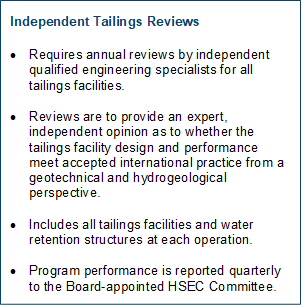
A component of the Tailings Management Standard is the requirement for regular independent third-party tailings reviews, which are recognized as a leading practice for effective tailings and water dam stewardship.
Annual site visits for the independent tailings reviews were completed at all operations last year except for Chapada which is planned in early 2022. In addition, online progress meetings with the independent reviewers and Engineer of Record were completed throughout the year to closely track progress made on outstanding recommendations.
-
Continuous Improvement
Enhanced Tailings Governance, Monitoring, and Reporting Initiative
Lundin Mining is evaluating enterprise-wide business intelligence solutions for real-time monitoring, data management, tailings governance, and critical controls reporting. A current landscape review was completed across all operations in 2021 with plans to define a viable solution in 2022.
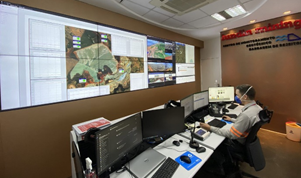
Geotechnical Monitoring Center at Chapada, Brazil -
Global Industry Standard on Tailings Management
Lundin Mining is committed to the implementation of the GISTM, which is the first global standard on tailings management.
Briefing workshops and information sessions were completed throughout 2021. The RMMS Tailings Management Standard was recently updated, and the existing Responsible Mining Policy will be updated to align with the GISTM requirements in early 2022.
Formal external gap analyses started in June 2021. Corporate and operation-level implementation action plans will be developed in 2022 for all tailings facilities based on the results of the gap analyses.
Lundin Mining plans for tailings facilities that are classified as having ‘Extreme’ or ‘Very high’ potential consequences of failure, as defined by the Standard, to be in conformance with the GISTM within three years of August 5, 2020, and all other facilities within five years.
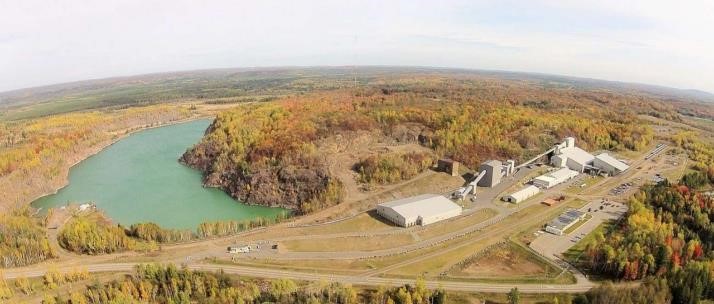
Humboldt Tailings Facility at Eagle in USA

